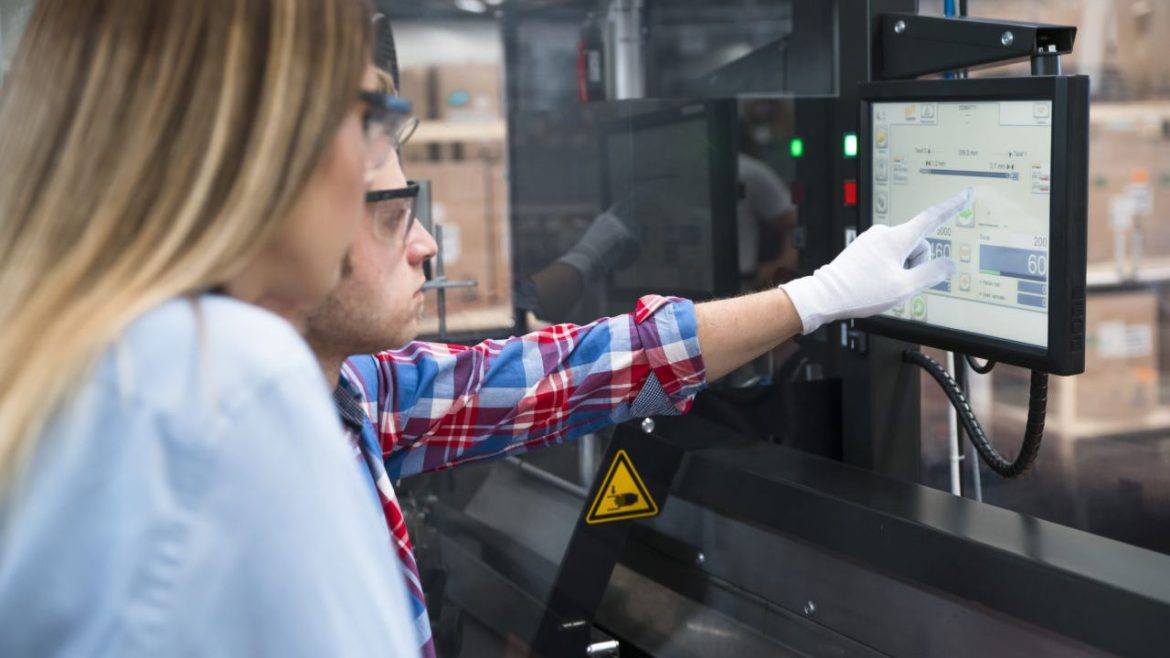Human-Machine Interface (HMI) is the point of contact between a human and a machine in an industrial, military, and transportation environment. In a factory control room, an aircraft cockpit, an armored vehicle, or any other environment, the efficiency and safety of operations can directly depend on the work of an HMI system. The Reinforced LCD Display has found its way as a leading feature of HMI systems today, and it will continue to be a significant part of the system in the future.
The Vital Role of Visual Interface in HMI Systems
The most fundamental part of any HMI system is the display. It is the display on which the operators observe the data, get alerts, process monitoring, and enter commands. The commercial-grade monitors, which may be adequate in non-critical workplaces, would not be able to perform well in a challenging field such as defense, manufacturing, and field-based logistics, where rugged LCD monitors are needed to fulfill the specifications of reliability and performance.
Rugged LCD monitors are specially designed to provide clear images and control features with high response levels even under physically, thermally, and electrically adverse conditions. They are the visual point of reference in the HMI system because they make sure that the information is communicated to human operators in a precise, on-time manner, and can be seen in any circumstances.
Stability Durability to Maintain Long Term HMI Stability
Physical strength of the components of an HMI system is vital to its performance. The conventional LCD screens are prone to failure in harsh environments where vibration, shock, dust, moisture, and temperature extremes are the order of the day. Rugged LCD monitors, however, are well enclosed, made with highly tensile connectors and covered touch screens to ensure long life in rugged environments where conditions cannot be easily controlled.
This long life reduces the potential of losing service because of equipment failure to a minimum, which is the most important in any industry where loss of service, even temporarily, can be financially burdensome, give rise to risk of operations, or loss of mission. Rugged display-based HMI systems have a longer service life of the entire system, reducing maintenance and replacement frequencies, so it is a long-term investment in the stability of the work.
Improved Real-time Decision-Making Visibility
Visibility is another major aspect that influences the performance of HMI. The rugged LCD monitors are bright and have wide angles of view, and their anti-glare finishing makes them visible under any light conditions. Such displays have clear images, whether it is situated in a sunlit place or under low-light conditions, like in submarines or airplanes.
Such visibility ensures that operators will not be forced to squint at the screens and decipher ambiguous information, reducing the number of errors and increasing the frequency of decision-making. This visual clarity leads to the success of operations in areas where safety and precision are a must.
Electromagnetic Applications
Electromagnetic interference (EMI) is a possible threat to electronic systems in most industrial and military settings. These Rugged LCD monitors are built in such a way that it has their own shielding system and grounding system, which prevents EMI as well as compatibility with other electronic devices around.
This electromagnetic compatibility is essential in ensuring the integrity of HMI systems, particularly in high-density electronic environments, e.g., aircraft control systems, military vehicles, and production plants. It assists in ensuring the accuracy and reliability of the whole machine interface and minimizes the chances of false readings or data corruption.
System Integration and Customizability
Refan Electronics is a company that provides rugged display technologies and has a variety of rugged LCD monitors that can be customized to fit perfectly in the HMI systems. Their units have support for different input types, mounting configurations, and protective features, making them fit to suit the requirements of a particular industry. This flexibility allows the engineers and system developers to provide HMI platforms that are not only ergonomic but also optimized in terms of functionality.
Such monitors enable real-time feedback and observation, and when coupled with control software, sensors, and automation equipment, they can close the loop of feedback between the human and the machine. In turn, the operators would form a more convenient vision of the way machines work and would have an opportunity to respond to the changes or warnings more appropriately.
Conclusion
Powerful LCD monitors are now a necessary consequence of the performance and dependability of the contemporary Human-Machine Interface units. These monitors are also very sturdy, visually clear, touch-sensitive, and easily integrated, making them the gateway between a complicated machine and the human decision-maker. In sectors where high precision, safety, and real-time data are critical, rugged displays give the HMI a strong, user-friendly, and mission-ready capability. Through its investment in rugged LCD technology, organizations are able to improve the efficacy, durability as well greatly and life span of their human-machine interface.
